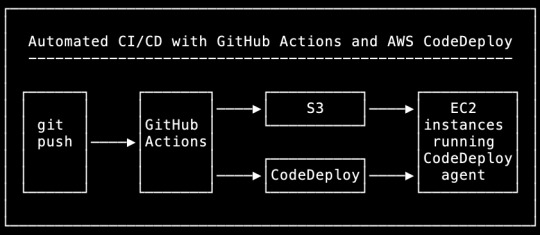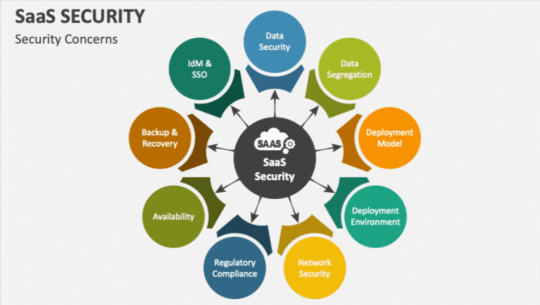Don't wanna be here? Send us removal request.
Text
Introduction to AWS DevOps: What It Is and Why It Matters

In today's fast-paced digital world, businesses need to deliver software and updates quickly while ensuring reliability, security, and scalability. This demand has led to the rise of DevOps — a set of practices that combine software development (Dev) and IT operations (Ops) to shorten the development lifecycle and improve collaboration between teams. When paired with Amazon Web Services (AWS), DevOps practices can reach new heights of efficiency, scalability, and flexibility.
In this blog post, we will explore what AWS DevOps is, its benefits, and why it's crucial for modern software development.
What is AWS DevOps?
AWS DevOps is the application of DevOps principles using Amazon Web Services (AWS) tools and infrastructure. It allows development and operations teams to work together more effectively by automating manual processes, improving software quality, and enabling faster deployment of applications. AWS provides a comprehensive set of tools and services designed to support all stages of the software development lifecycle — from planning and coding to building, testing, deploying, and monitoring.
In traditional environments, developers and operations teams often work in silos, causing delays and inefficiencies. AWS DevOps integrates these teams with automated workflows, shared tools, and cloud resources, leading to quicker deployments and more stable environments.
Why AWS DevOps Matters
Faster and More Efficient Software Delivery One of the biggest challenges in software development is ensuring fast yet reliable deployments. AWS DevOps enables Continuous Integration (CI) and Continuous Deployment (CD), allowing developers to release updates, features, and patches more frequently. Tools like AWS CodePipeline and CodeDeploy automate the build, test, and deployment processes, accelerating the release cycle and minimizing human errors.

Scalability on Demand AWS is known for its scalability. Whether your application needs to scale up to handle a spike in users or scale down during off-peak hours, AWS makes it easy. Services like Amazon EC2, Elastic Load Balancing, and AWS Auto Scaling ensure that your infrastructure can grow or shrink as needed, without the hassle of manual intervention.
Cost Efficiency AWS operates on a pay-as-you-go model, which means you only pay for the resources you use. This model allows organizations to avoid over-provisioning and helps them optimize their infrastructure costs. With AWS DevOps tools like AWS CloudFormation, infrastructure can be managed as code, further reducing waste and ensuring cost-effective resource management.
Increased Collaboration Between Development and Operations Teams DevOps thrives on collaboration, and AWS provides the tools necessary to break down the barriers between development and operations teams. AWS services like CodeBuild, CodeCommit, and CloudFormation help ensure that both teams have a unified view of the application’s environment, improving communication and aligning efforts towards common goals.
Security and Compliance Security is a top priority in modern software development. AWS offers a range of security tools, such as AWS IAM (Identity and Access Management), AWS KMS (Key Management Service), and Amazon GuardDuty, to ensure that applications are secure at every stage of the lifecycle. With AWS’s robust security framework, DevOps teams can integrate security measures directly into their pipelines, ensuring that code is secure before deployment.
Key AWS Services for DevOps
Here are some of the essential AWS services that power DevOps workflows:
AWS CodePipeline: Automates the continuous integration and delivery (CI/CD) pipeline, allowing teams to quickly release software updates.
AWS CodeBuild: A fully managed build service that compiles code, runs tests, and packages applications for deployment.
AWS CodeDeploy: Automates the deployment of applications to various compute services like EC2, Lambda, and on-premises servers.
Amazon EC2: Virtual servers that provide scalable compute capacity for applications.
Amazon ECS and EKS: Tools for managing containers using Docker and Kubernetes.
AWS CloudFormation: Allows you to automate and manage your AWS infrastructure as code, ensuring consistent and repeatable deployments.
AWS Lambda: A serverless computing service that lets you run code without managing servers, ideal for microservices and event-driven architectures.
Amazon CloudWatch: A monitoring and observability tool that tracks application performance, logs, and resource utilization.
Conclusion
In the fast-paced world of modern software development, speed, scalability, and security are paramount. AWS DevOps brings together the power of AWS cloud infrastructure and DevOps best practices to accelerate the software delivery lifecycle. By automating manual tasks, enhancing collaboration, and providing on-demand scalability, AWS DevOps empowers organizations to build, test, and deploy applications faster while maintaining the highest levels of security and reliability.
If you're looking to improve your development workflow, reduce costs, and accelerate time to market, integrating AWS DevOps into your operations is a game changer.
0 notes
Text
The Future of Cybersecurity: Trends to Watch in 2025

Cybersecurity is always changing as technology evolves and new threats appear. In 2025, several important trends will shape how we keep data, systems, and users safe. Here’s a look at the key cybersecurity trends to watch for in the near future.
1. AI and Machine Learning for Better Protection
Artificial Intelligence (AI) and Machine Learning (ML) will play a bigger role in detecting and preventing cyberattacks. These technologies can analyze huge amounts of data quickly, helping security teams spot threats faster. By 2025, AI will be even better at predicting and stopping attacks before they happen, making systems smarter and safer.

2. Zero Trust Security Model
The "Zero Trust" model means never trusting anyone or anything, even if they are inside the network. This approach checks and monitors every user and device constantly to make sure only the right people have access to sensitive data. By 2025, more organizations will adopt Zero Trust security to make their networks harder to breach.
3. Quantum Computing and New Encryption
Quantum computers, still in development, will be able to break traditional encryption methods, making it easier for hackers to steal data. By 2025, experts will be working hard to create new encryption techniques that can stand up to the power of quantum computers. This will be a major step in keeping our data safe as technology advances.
4. Securing IoT Devices
The number of Internet of Things (IoT) devices—like smart thermostats, wearables, and connected appliances—is growing fast. While they make life easier, they also open up new ways for hackers to attack. In 2025, there will be more focus on securing these devices, ensuring they are built with strong protections to prevent breaches.

5. Stronger Privacy Laws
With the increasing number of data breaches, governments are introducing stricter privacy laws. The General Data Protection Regulation (GDPR) in Europe is a great example, and more countries are expected to follow suit. By 2025, companies will have to comply with stronger rules about how they handle personal data, ensuring users' privacy is better protected.
6. Cybersecurity-as-a-Service (CSaaS)
Not every company has the resources to handle cybersecurity on its own. Cybersecurity-as-a-Service (CSaaS) allows businesses to outsource their security needs to experts. By 2025, this service will become more popular, making it easier for smaller companies to afford and implement top-notch cybersecurity protections without needing an in-house team.

7. Training People to Be Security-Aware
People are often the weakest link in cybersecurity because of things like falling for phishing scams or using weak passwords. In 2025, companies will focus more on educating their employees about security. This includes regular training to recognize threats, follow secure practices, and keep company data safe.
8. Cyber Resilience: Preparing for the Worst
Despite best efforts, cyberattacks will still happen. That’s why cyber resilience—being able to bounce back quickly from attacks—will be crucial.
1 note
·
View note